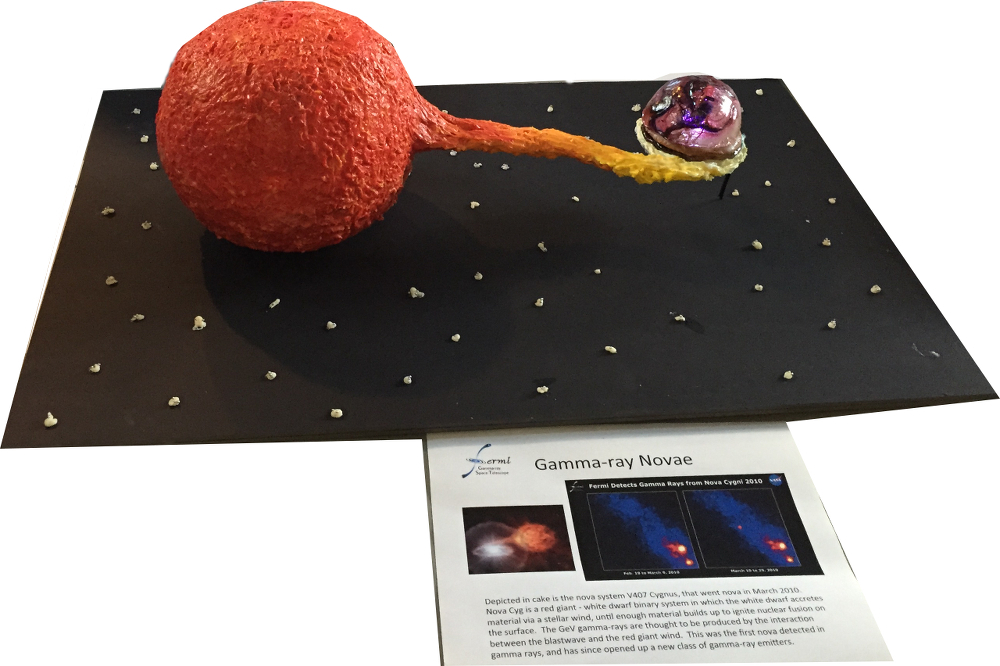
 Credit: The Fermi Project Bakers
Credit: The Fermi Project Bakers
Good Enough to Accrete
In March 2010, astronomers saw something never seen before. Observations with the Large Area Telescope on the Fermi Gamma-ray Space Telescope saw the eruption of Gamma-ray light from a nova called V407 Cyg. Novae are binary systems consisting of a normal star orbited by a white dwarf, which is the dense, compact remains of the core of a star like the sun that gets left behind after the star's nuclear fuel is exhausted. Hydrogen-rich gas from the normal star can fall on the white dwarf and be accreted on its surface. Because the white dwarf is so dense, its surface gravity is incredibly strong, and the accreted material gets compressed and heated to such high temperatures and pressures that the hydrogen atoms begin to explosively fuse together. This explosive hydrogen burning produces an enormous brightening of the star. Because this explosion is not powerful enough to destroy the white dwarf, the accreted material can build up on the white dwarf's surface after some time, and the explosive cycle can begin again. In V407 Cyg, astronomer's believe unusual Gamma-ray emission is produced as the blast wave from the explosion collides with the stellar wind from the normal companion star, a red giant star. The picture above shows a model of V407 Cyg, showing the normal, red-giant star, its accretion stream, and the tiny, accreting white dwarf. This is a particularly tasty meal for the white dwarf - the model is made of cake.
Published: February 2, 2015
<
HEA Dictionary ● Archive
● Search HEAPOW
● Other Languages
● HEAPOW on Facebook
● Download all Images
● Education ● HEAD
>

Each week the HEASARC
brings you new, exciting and beautiful images from X-ray and Gamma ray
astronomy. Check back each week and be sure to check out the HEAPOW archive!
Page Author: Dr. Michael F. Corcoran
Last modified Tuesday, 27-Feb-2024 10:15:17 EST


